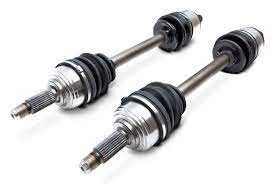When it comes to the electrical system of a car, fuses and relays play a crucial role in ensuring that everything runs smoothly. These small components are often overlooked, but without them, your car may not start, or certain functions may not work properly. In this article, we will delve into the world of car fuses and relays, discussing their importance, how they work, and some common issues that may arise.
The Function of Car Fuses
Car fuses are designed to protect the wiring and electrical components of a vehicle. They act as a safeguard against electrical overloads and short circuits, which can cause damage to the car’s electrical system if left unchecked. Fuses are made of a metal strip or wire that will melt and break the circuit if an overload occurs. This prevents any further damage to the electrical components and wiring.
There are different types of car fuses, including blade fuses, glass tube fuses, and ceramic fuses. Each type has its own specific characteristics and is used in different parts of the car. Blade fuses, for example, are commonly used in modern vehicles and are easy to replace, while glass tube fuses are often found in older models.
Common Issues with Car Fuses
One of the most common issues with car fuses is a blown fuse. This can happen due to a variety of reasons, such as a power surge, a short circuit, or simply age. When a fuse blows, the circuit is broken, and the corresponding electrical component will stop working. For example, if the fuse for the headlights blows, the headlights will not turn on.
It is important to note that a blown fuse is usually a symptom of an underlying issue, such as a short circuit or a malfunctioning electrical component. Simply replacing the fuse without addressing the root cause may result in the new fuse blowing as well. Therefore, it is crucial to diagnose the problem properly before replacing the fuse.
The Role of Car Relays
Car relays are electro-mechanical switches that are used to control high current circuits with a low current signal. They are typically used to control functions such as the starter, fuel pump, and cooling fan. Relays are essential for reducing the load on the car’s electrical system, as they enable the use of smaller, lower current switches to control higher current circuits.
Relays work by using an electromagnet to mechanically open or close the circuit. When the relay receives a low current signal from the car’s electrical system, the electromagnet is activated, causing the switch to close and complete the circuit. This allows the high current to flow through the circuit, activating the corresponding function.
Common Issues with Car Relays
Like fuses, car relays can also experience issues that can affect the proper functioning of the vehicle. One common problem is a faulty relay, which may result in a specific function not working as intended. For example, if the relay that controls the fuel pump is faulty, the car may have trouble starting or may stall unexpectedly.
In some cases, relays can also become stuck in the closed position, causing the corresponding function to remain active even when it should not be. This can result in a drained battery or other electrical issues. It is important to regularly inspect and test relays to ensure that they are functioning properly and replace any faulty ones as soon as possible.
Replacing Car Fuses and Relays
When it comes to replacing car fuses and relays, it is important to use the correct type and amperage to ensure the safety and proper functioning of the electrical system. Fuses and relays are often labeled with their amperage rating, which indicates the maximum current that they can safely handle. Using a fuse or relay with the wrong amperage rating can result in electrical issues and potential damage to the car.
When replacing a fuse, it is important to first diagnose the underlying issue that caused the fuse to blow. This may involve inspecting the corresponding electrical component for any signs of damage or a short circuit. Once the issue is resolved, the fuse can be safely replaced with the correct type and amperage.
Similarly, when replacing a relay, it is essential to use the correct part for the specific function it controls. Relays come in various configurations and are designed to control different functions, so using the wrong relay can result in the function not working properly or not working at all.
Conclusion
Car fuses and relays are essential components of the electrical system, ensuring the proper functioning and safety of the vehicle. Fuses protect against electrical overloads and short circuits, while relays enable the control of high current circuits with low current signals. Understanding the function of fuses and relays, common issues that may arise, and how to properly replace them is crucial for maintaining the electrical system of a car.
Regular inspection and maintenance of fuses and relays can help prevent potential issues and ensure that the car’s electrical system remains in good working order. By understanding the role of these components and taking the necessary precautions, car owners can ensure that their vehicles remain safe and reliable on the road.







Leave a Comment